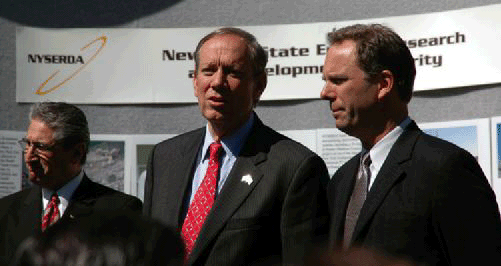| I |
t's no secret that New York has long had a reputation as a high-tax
state.
But what many corporate real estate executives
may not realize is that this reputation isn't keeping major companies
from selecting the Empire State in which to locate profit-making operations.
What appears to be a taxing issue for some has
turned into a windfall for others, thanks to a creative -- and sometimes
controversial -- Empire Zone business incentives program.
If you haven't heard about the EZ solution to
taxes in New York, then you probably don't do business there. Those
who do know about the program take advantage of it, sometimes to the
point of eliminating their property tax liability to the state.
The issue may seem complex, but it's simple,
says Brian McMahon, executive director of the New York State Economic
Development Council.
"You can get your real property tax liability
in New York down to zero," said McMahon. "With effective use of the
Qualified Empire Zone Enterprises (QEZE) program, a company can receive
a sales tax exemption, credit for real property taxes and a tax reduction
credit."
The EZ program, which originated in 1986 as then
New York Sen. Jack Kemp was campaigning nationally for a federal empowerment
zone program, really didn't flourish in New York until 2001, when
the rules for eligibility were expanded to allow more companies to
take advantage of it.
Since 2001, more than 50,000 new jobs have been
created by New York companies using EZ incentives. Since its inception
in 1986, EZ has produced $US4.1 billion in private capital investment
in New York.
Today, New York funds incentives to 72 Empire
Zones, 8,450 businesses, 2,132 manufacturers and 257,775 workers.
Many of these are in classic Rust Belt locations that are heavily
incentivized to guard against employers leaving New York for greenfield
sites in the South.
That doesn't mean the state is losing money on
the deals. Betty McIntosh, an Atlanta-based incentives expert and
consultant with Stadtmauer Bailkin Biggins LLC, says that "the average
time of payback in New York is 3.7 months."
"The bottom line is that businesses that qualify
have the opportunity to operate in a tax-free environment for 10 years,"
McMahon says.
 |
| Assemblyman James Tedisco, New York
Gov. George Pataki and DayStar Technologies CEO John Tuttle (l.
to r.) celebrate DayStar’s move to the Saratoga Technology + Energy
Park (STEP) facility in Malta. The $40-million solar technology
investment illustrates part of the mission of the New York State
Energy Research and Development Authority, “to spur economic development
in New York State through energy efficiency, research and development
and environmental protection programs,” said NYSERDA President Peter Smith. |

